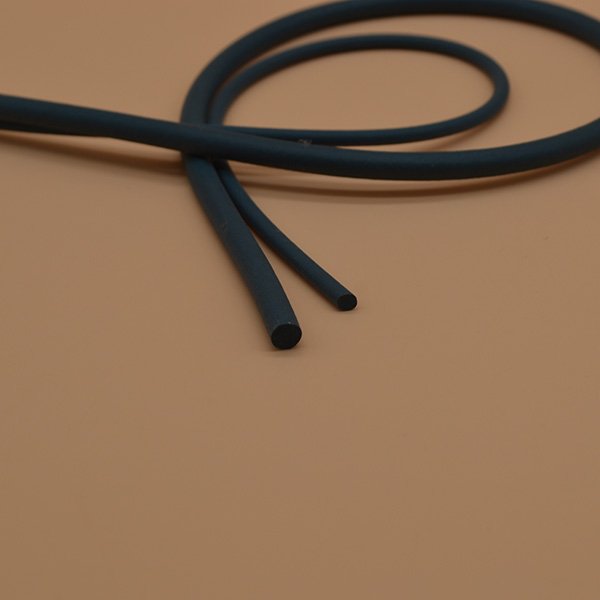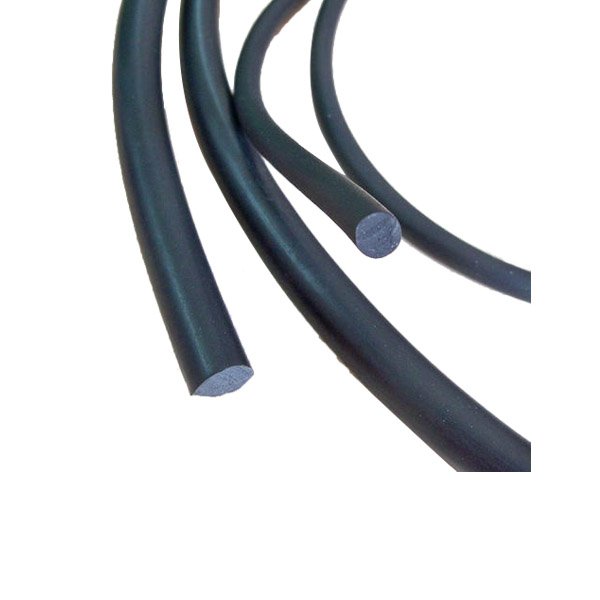O-rings are mostly rubber and are critical components of machine parts. Their main job is to stop leaks and ensure your device works as it should. Most people get confused when selecting the suitable material for O-rings. If yes, then you are not alone. This Nitrile VS EPDM O-rings Comparison guide can clear all your confusion.
EPDM and Nitrile are the two most popular rubbers used to make O-rings. As usual, they both come with unique pros & cons. However, one’s cons might be the other’s pros. That’s why their suitability is different for different applications. What happens if you choose the wrong material for your project? First, you won’t get the performance you expect. Second, the incorrect material leads to early leaks, wear, or system failure. So, it is crucial to select the correct rubber material for O-rings.
This article discusses the importance of choosing suitable material and how to choose it. It will highlight a few factors to consider when selecting your O-ring material.
What are O-rings?
O-rings are ring-like structures made of rubber or elastomers. They are critical components used as mechanical seals. When squeezed, O-rings make a seal when they are put in slots between two parts. With these rings, your device won’t leak any liquids or gases.
- O-rings seal the gap between parts and prevent liquid and gas from leakage. It works on both static and dynamic systems. From here, you can realize that o-rings are highly flexible.
- O-rings can still perform their functions even under varying pressure levels. However, you must be careful when using the highest pressure rating.
- One of the best things about o-rings is that they can operate at varying temperatures. However, the rating mainly depends on the type of materials used.
- O-rings can withstand wear, abrasion, and mechanical stress, which increases your device’s lifespan.
- When you use o-rings in your system, your device gets a longer lifespan. This way, you can reduce replacement costs significantly.
Where are O-rings used?
O-rings are widely used in many devices. As you already know, what they do precisely. You can typically find them in engines, pumps, and valves. They are very critical in hydraulic cylinders to maintain pressure. O-rings are also used in fuel injectors to stop fuel from escaping.
O-rings also assist in sealing home device water filters, including those in coffee makers. They are vital in refrigerators, pressure washers, and more. O-rings provide correct water flow and stop coolant leakage.
O-rings are also used in medical equipment, including syringes and respiratory and dialysis machines. They are also used in laboratories for pipettes and centrifuges. Moreover, they are pretty popular in plumbing fittings. They are vital in pipe connections, showerheads, and faucets. They keep systems running and stop water from leaking.
Does the material of O-rings matter? But why?
Indeed, the material used for o-rings matters. It affects the O-ring’s performance on different devices. The material tells you how well o-rings can resist chemicals, oils, and fuels. It also affects the durability of the O-rings. The ability to withstand pressure and temperature also depends on the type of material.
The contribution of EPDM and Nitrile in making O-rings
O-rings can be made of EPDM or Nitrile. Both have unique qualities that fit many uses.
Both EPDM and Nitrile rubber offer excellent sealing abilities. However, their specific strengths depend on various factors. For example, NBR is a go-to material for fuel injection. However, if your device deals with water, it may not offer the best result. You would better choose EPDM since it is excellent against water and steam.

EPDM rubber
EPDM stands for Ethylene Propylene Die Monomer. This rubber material is famous for excellent flexibility. EPDM products also work great against harsh weather conditions. Because of this, people always prefer EPDM for outdoor applications.
Moreover, EPDM rubber is also resistant to heat, ozone, and UV radiation. Because of this, people prefer it for engines and HVAC systems. Another great advantage of using EPDM rubber is the water resistance. Because of this, people choose this material for water pumps and heating systems.

Nitrile Rubber
Nitrile or NBR rubber is also a common name in the rubber industry. This rubber material is highly resistant to oils, fuels, and other petroleum-based products. So, it is evident that nitrile rubber will work great in devices that deal with these things.
Nitrile rubber is often used in fuel pumps, hydraulic systems, and machinery. Piston O-rings are often made of nitrile rubber. It ensures both durability and strength in sealing fluids. Automotive systems, such as brakes, fuel injectors, and gaskets, greatly depend on NBR.
Nitrile vs EPDM: Which is more effective for O-rings?
You already know that EPDM and Nitrile are both famous for making o-rings. But which one is the best fit? To find out this answer, you have to consider a few factors.
EPDM and nitrile o-rings both have advantages and disadvantages. When you select between these two, you must compare your project requirements.
Nitrile vs EPDM: Chemical Resistance
Nitrile rubber is usually resistant to oils, fuels, and petroleum-based fluids. It is widely used in devices involving these substances and is a go-to choice for engine seals, hydraulic systems, and fuel pumps.
EPDM rubber O-rings are great against water and steam. Therefore, you can use them in water pumps and heating systems. EPDM rubber is also excellent against polar chemicals like alcohol and ketones.
Overall, nitrile O-rings are better for oil-heavy devices. However, if you are dealing with water-based devices, you should choose EPDM O-rings.

EPDM Rubber vs Nitrile: Temperature Resistance
The regular EPDM rubber has a temperature rating as low as -50 and as high as 150 degrees Celsius. On the other hand, nitrile rubber works great within the range of -30 to 120 degrees Celsius.
EPDM O-rings can handle high temperatures, so people prefer them for HVAC and steam. Although the difference is insignificant, nitrile rubber remains excellent at high temperatures. It shines in places where moderate temperature is involved.
In reality, other resistance abilities matter more than temperature resistance. So, when you decide on the most suitable option, you should balance other factors too.
Nitrile vs EPDM: Weather and Ozone Resistance
EPDM O-rings are highly suitable for resisting weather and ozone. It can effectively block UV rays and ozone. Because of this, they are commonly used in outdoor applications. You can often find its use in car door seals and roofing systems. Note that EPDM rubber remains durable even under prolonged sun exposure.
On the other hand, nitrile O-rings lack natural resistance to ozone and weathering. If Nitrile is exposed to sunlight, it will crack, degrade, and lose its elasticity. You may use them but must treat them with additives to improve their performance. In general, Nitrile rubber o-rings are ideal for indoor use.
Nitrile vs EPDM: Compression Set Resistance
A compression set is a material’s behavior. It determines the ability to return to its original shape after being compressed. This behavior heavily depends on three factors: temperature, pressure, and duration of the stress.
EPDM O-rings have excellent compression set resistance. They maintain their shape and sealing ability over long periods of use. In general, EPDM rubber is 25% compressible. It also works great even under high temperatures.
Conversely, Nitrile O-rings have relatively low compression set resistance. Under heat or steady compression, they may distort. Remember that under tremendous stress, nitrile rubber is more likely to shatter.
Nitrile vs EPDM: Stability
The stability of a rubber mainly depends on the application or project. Does it involve oil, chemicals, or abrasives? How about the working environments?
Nitrile rubber is usually very stable when dealing with oil, fuel, and chemicals. Because of this, fuel pumps, oil filters, and hydraulic systems all use it. However, adding UV rays or neutral liquids might be less stable.
On the other hand, EPDM O-rings are perfect for sealing polar solvents, steam, and water. However, their stability suffers when adding chemicals, fuels, or oils. Consequently, the use of Nitrile and EPDM determines the decision.
Nitrile vs EPDM: Hardness and Flexibility
The capacity of a substance to withstand deformation under a force is known as hardness. Flexibility, on the other hand, tells you how easily a material can be stretched or bent.
Nitrile rubber O-rings come in many hardness degrees. They are reasonably flexible but might lose their elasticity in freezing conditions. Conversely, EPDM rubber is well-known for its incredible adaptability. People use EPDM rubber for dynamic sealing applications since it is flexible even in very high temperatures.
EPDM vs Nitrile: Cost
After all the consideration, everyone comes to the final factor: cost. Cost determines profitability. However, cheaper solutions always don’t mean you have won. You must balance your project needs with the material’s performance.
Nitrile rubber is generally more cost-effective than EPDM rubber. Its manufacturing process is simple, and its availability is another reason nitrile rubber is affordable. On the other hand, EPDM rubber is slightly more expensive than NBR, but not too much. However, EPDM is always the best option if you consider durability and weather resistance.
Conclusion
EPDM and Nitrile O-rings are both prevalent in many applications. However, their exact uses differ based on their different properties. Most people make mistakes when choosing the right product. This Nitrile VS EPDM O-ring guide can help you choose the suitable material for your project.
If you need consultancy, contact us at our customer service point. Please submit the details about your device, and our expert will provide a solution immediately.
